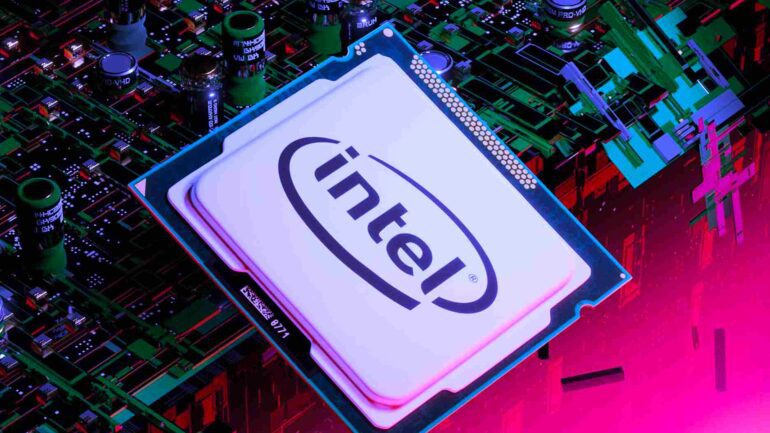TL;DR:
- Intel’s strategic focus on AI expansion beyond cloud data centers is evident.
- AI accelerators with advanced models necessitate powerful hardware and intensive resources.
- Intel competes with Nvidia using Gaudi AI chips and versatile data center GPUs.
- Intel CEO Pat Gelsinger emphasizes AI integration across various domains.
- Sapphire Rapids chips integrate AI accelerators for data center CPU AI inference tasks.
- AI’s migration to edge devices is anticipated due to economic and privacy factors.
- Meteor Lake PC CPUs with dedicated AI hardware facilitate direct user device AI tasks.
- Strong software support enhances Intel’s AI hardware capabilities.
- Intel’s dominance in CPU market and diverse AI hardware initiatives set it apart.
- Multifaceted approach positions Intel to tap into AI demand, impacting market dynamics.
Main AI News:
The realm of artificial intelligence (AI) is undergoing a transformation, and industry titan Intel is positioned to catalyze this shift. The surge in demand for advanced AI models is reshaping the landscape, necessitating powerful AI accelerators ensconced within expansive cloud data centers. The confluence of memory and computational prerequisites is formidable, prompting Intel to unveil ingenious strategies to capitalize on this AI evolution.
Within this burgeoning market for AI accelerators, Intel is making significant strides. The deployment of specialized Gaudi AI chips has piqued considerable interest, boasting the capability to outperform even Nvidia’s preeminent GPUs in certain scenarios. Concurrently, Intel extends its reach with data center GPUs, designed to amplify a broader spectrum of workloads.
Diverging from convention, Intel’s CEO, Pat Gelsinger, envisages an AI landscape transcending the boundaries of data centers. In a visionary move, the company is embedding AI into various facets of life. This visionary perspective signifies that Intel’s AI prospects extend far beyond the domain of AI accelerators.
Unveiling Pervasive AI Adjudicating the AI domain beyond dedicated accelerators, Intel seeks to dominate data center AI workloads through its robust server CPU portfolio. The recent unveiling of the Sapphire Rapids chips marks a pivotal moment, integrating AI accelerators within, tailored to expedite AI inference tasks. While training AI models necessitates potent chips, Sapphire Rapids provides a conduit for efficient model execution on data center CPUs. Intel’s estimations reveal that AI application drives a notable portion of Sapphire Rapids sales.
Despite vying for data center AI supremacy, Intel harbors the conviction that AI’s trajectory will draw it closer to end users. In a candid interview at Deutsche Bank’s 2023 Technology Conference, Pat Gelsinger alluded to the limitations of relying solely on cloud-based AI processing. The intricacies of economics, physics, and privacy converge to advocate for edge-based AI deployment.
Gelsinger’s vision encapsulates scenarios like real-time human tracking in retail, manufacturing, and supply chain locations. Although the cloud could theoretically host such operations, practicality and cost-effectiveness become prohibitive factors. Similarly, the prospect of real-time language translation during video calls underscores the latency woes associated with cloud-centric AI models. Economically, optimizing AI tasks directly on users’ devices becomes a compelling alternative.
Navigating the Future with Intel’s AI Hardware The impending launch of Meteor Lake PC CPUs reinforces Intel’s AI-centric pursuit. Highlighting this endeavor, Meteor Lake boasts dedicated AI hardware tailored to expedite specific AI workloads suitable for direct execution on user PCs. While massive language models might remain out of reach for laptops, myriad lightweight AI tasks can be efficiently offloaded from the CPU.
Key to Intel’s AI aspirations is robust software support. Meteor Lake’s AI capabilities incentivize software providers to harness its potential. A striking example lies in video conferencing software, where utilizing customer devices for AI functionalities trumps reliance on costly cloud-based accelerators.
Inevitably, quantity plays a pivotal role. The vast deployment of desktops and laptops across the United States, coupled with Intel’s CPU dominance, propels AI integration. As Intel infuses AI hardware into Meteor Lake and future chip lineages, developers and software providers will invariably harness this novel potential.
Dominance in AI Intel’s commanding share of the x86 CPU market, surpassing 80%, coupled with its concerted AI hardware initiatives, positions it favorably against rival AMD. While Nvidia capitalizes on the AI accelerator wave, Intel’s multifaceted approach distinguishes it. The company vends AI accelerators, equips data center CPUs with AI acumen, prepares to dispense PC CPUs with AI hardware, and envisages manufacturing AI chips for third parties via its foundry business.
Conclusion:
Intel’s strategic pivot toward AI beyond cloud boundaries signifies a transformative shift. The company’s diverse approach, from specialized AI chips to integration in CPUs, underscores its readiness to address growing AI demands. This move has far-reaching implications, poised to redefine market dynamics by promoting edge-based AI solutions and reshaping competition in the AI hardware landscape.

